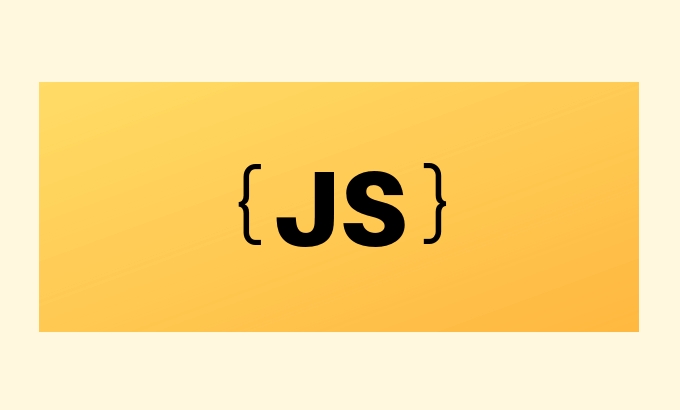Dependency injection is useful in JavaScript because it improves testability, maintainability, and decoupling. 1. Constructor injection passes dependencies through constructors, which are suitable for class structures and are clear and easy to measure; 2. Method injection passes dependencies as method parameters, suitable for situations where dependencies are only needed in specific methods; 3. Use IoC containers such as InversifyJS or custom containers to manage dependencies uniformly, suitable for complex projects. Practical recommendations include avoiding hard-coded dependencies, keeping constructors concise, using clear naming and prioritizing interface abstraction, thereby improving code flexibility and modularity.

JavaScript itself does not have a built-in dependency injection (DI) mechanism, but as the application scales, it becomes complicated to manage dependencies manually. By implementing the dependency injection mode, we can improve the testability, maintainability and decoupling of our code. Here are some common JavaScript dependency injection implementations and suggestions.

What is dependency injection? Why is it useful in JavaScript?
Dependency injection is a design pattern. The core idea is to pass in other objects that an object depends on from the outside, rather than create it yourself inside the object. The advantage of this is that it is to facilitate replacement of dependencies, easier unit testing, and improve modularity.
For example, if a function directly depends on a specific service object, it will be difficult to test or reuse. But if this service is passed in through parameters, it is easy to replace with mock data or a different implementation.

Common JavaScript dependency injection methods
1. Constructor Injection
This is the most common way to apply to class structures. Passing in dependencies through the constructor allows the class to obtain the required services when initialized.
class UserService {
constructor(apiClient) {
this.apiClient = apiClient;
}
getUser(id) {
return this.apiClient.get(`/users/${id}`);
}
} When using it, you can pass in different apiClient implementations:

const mockClient = {
get: (url) => Promise.resolve({ id: 1, name: "Test User" })
};
const service = new UserService(mockClient);The advantage of this method is that it is clear and easy to test, and is suitable for medium and large projects.
2. Method Injection
Sometimes you don't need to use a dependency in the entire class, but only in a certain method. At this time, the dependency can be passed in as a method parameter.
function sendNotification(user, notifier) {
notifier.send(`Hello, ${user.name}`);
} During testing, you can pass in notifier of the mock without caring about its specific implementation.
3. Use container management dependencies (IoC containers)
If your project is complex enough, consider using a dependency injection container (IoC container), such as InversifyJS or implementing a simple container yourself.
A simple container example:
const container = {
apiClient: new RealAPIClient(),
logger: new ConsoleLogger()
};
class UserService {
constructor({ apiClient, logger }) {
this.apiClient = apiClient;
this.logger = logger;
}
}In this way, all dependencies are managed by the container, and the class only needs to declare what it needs, without caring about how it is created.
Practical suggestions and precautions
- Avoid hard-coded dependencies : Try not to create dependency objects directly inside classes or functions, otherwise it will be difficult to replace and test.
- Keep the constructor simple : Although constructor injection is practical, don't pass too many parameters, otherwise it will affect readability. Consider using configuration object wrapper.
- Clear naming : Use meaningful parameter names when injecting dependencies, such as
httpClientinstead ofclient. - Priority to using interface abstraction : Even if JavaScript is a dynamically typed language, it can improve code flexibility by conventional interfaces.
summary
JavaScript implementation of dependency injection is not complicated. The key is to understand its core idea: leave dependencies to external provision . You can choose constructor injection, method injection based on project size, or use containers to centrally manage dependencies. Basically all that is, although not difficult, it is easy to be ignored in development.
The above is the detailed content of Implementing JavaScript Dependency Injection Patterns. For more information, please follow other related articles on the PHP Chinese website!

Hot AI Tools

Undress AI Tool
Undress images for free

Undresser.AI Undress
AI-powered app for creating realistic nude photos

AI Clothes Remover
Online AI tool for removing clothes from photos.

Clothoff.io
AI clothes remover

Video Face Swap
Swap faces in any video effortlessly with our completely free AI face swap tool!

Hot Article

Hot Tools

Notepad++7.3.1
Easy-to-use and free code editor

SublimeText3 Chinese version
Chinese version, very easy to use

Zend Studio 13.0.1
Powerful PHP integrated development environment

Dreamweaver CS6
Visual web development tools

SublimeText3 Mac version
God-level code editing software (SublimeText3)

Hot Topics
 Why should you place tags at the bottom of the ?
Jul 02, 2025 am 01:22 AM
Why should you place tags at the bottom of the ?
Jul 02, 2025 am 01:22 AM
PlacingtagsatthebottomofablogpostorwebpageservespracticalpurposesforSEO,userexperience,anddesign.1.IthelpswithSEObyallowingsearchenginestoaccesskeyword-relevanttagswithoutclutteringthemaincontent.2.Itimprovesuserexperiencebykeepingthefocusonthearticl
 How to work with dates and times in js?
Jul 01, 2025 am 01:27 AM
How to work with dates and times in js?
Jul 01, 2025 am 01:27 AM
The following points should be noted when processing dates and time in JavaScript: 1. There are many ways to create Date objects. It is recommended to use ISO format strings to ensure compatibility; 2. Get and set time information can be obtained and set methods, and note that the month starts from 0; 3. Manually formatting dates requires strings, and third-party libraries can also be used; 4. It is recommended to use libraries that support time zones, such as Luxon. Mastering these key points can effectively avoid common mistakes.
 What is event bubbling and capturing in the DOM?
Jul 02, 2025 am 01:19 AM
What is event bubbling and capturing in the DOM?
Jul 02, 2025 am 01:19 AM
Event capture and bubble are two stages of event propagation in DOM. Capture is from the top layer to the target element, and bubble is from the target element to the top layer. 1. Event capture is implemented by setting the useCapture parameter of addEventListener to true; 2. Event bubble is the default behavior, useCapture is set to false or omitted; 3. Event propagation can be used to prevent event propagation; 4. Event bubbling supports event delegation to improve dynamic content processing efficiency; 5. Capture can be used to intercept events in advance, such as logging or error processing. Understanding these two phases helps to accurately control the timing and how JavaScript responds to user operations.
 A definitive JS roundup on JavaScript modules: ES Modules vs CommonJS
Jul 02, 2025 am 01:28 AM
A definitive JS roundup on JavaScript modules: ES Modules vs CommonJS
Jul 02, 2025 am 01:28 AM
The main difference between ES module and CommonJS is the loading method and usage scenario. 1.CommonJS is synchronously loaded, suitable for Node.js server-side environment; 2.ES module is asynchronously loaded, suitable for network environments such as browsers; 3. Syntax, ES module uses import/export and must be located in the top-level scope, while CommonJS uses require/module.exports, which can be called dynamically at runtime; 4.CommonJS is widely used in old versions of Node.js and libraries that rely on it such as Express, while ES modules are suitable for modern front-end frameworks and Node.jsv14; 5. Although it can be mixed, it can easily cause problems.
 How does garbage collection work in JavaScript?
Jul 04, 2025 am 12:42 AM
How does garbage collection work in JavaScript?
Jul 04, 2025 am 12:42 AM
JavaScript's garbage collection mechanism automatically manages memory through a tag-clearing algorithm to reduce the risk of memory leakage. The engine traverses and marks the active object from the root object, and unmarked is treated as garbage and cleared. For example, when the object is no longer referenced (such as setting the variable to null), it will be released in the next round of recycling. Common causes of memory leaks include: ① Uncleared timers or event listeners; ② References to external variables in closures; ③ Global variables continue to hold a large amount of data. The V8 engine optimizes recycling efficiency through strategies such as generational recycling, incremental marking, parallel/concurrent recycling, and reduces the main thread blocking time. During development, unnecessary global references should be avoided and object associations should be promptly decorated to improve performance and stability.
 How to make an HTTP request in Node.js?
Jul 13, 2025 am 02:18 AM
How to make an HTTP request in Node.js?
Jul 13, 2025 am 02:18 AM
There are three common ways to initiate HTTP requests in Node.js: use built-in modules, axios, and node-fetch. 1. Use the built-in http/https module without dependencies, which is suitable for basic scenarios, but requires manual processing of data stitching and error monitoring, such as using https.get() to obtain data or send POST requests through .write(); 2.axios is a third-party library based on Promise. It has concise syntax and powerful functions, supports async/await, automatic JSON conversion, interceptor, etc. It is recommended to simplify asynchronous request operations; 3.node-fetch provides a style similar to browser fetch, based on Promise and simple syntax
 var vs let vs const: a quick JS roundup explainer
Jul 02, 2025 am 01:18 AM
var vs let vs const: a quick JS roundup explainer
Jul 02, 2025 am 01:18 AM
The difference between var, let and const is scope, promotion and repeated declarations. 1.var is the function scope, with variable promotion, allowing repeated declarations; 2.let is the block-level scope, with temporary dead zones, and repeated declarations are not allowed; 3.const is also the block-level scope, and must be assigned immediately, and cannot be reassigned, but the internal value of the reference type can be modified. Use const first, use let when changing variables, and avoid using var.
 Why is DOM manipulation slow and how can it be optimized?
Jul 01, 2025 am 01:28 AM
Why is DOM manipulation slow and how can it be optimized?
Jul 01, 2025 am 01:28 AM
The main reasons for slow operation of DOM are the high cost of rearrangement and redrawing and low access efficiency. Optimization methods include: 1. Reduce the number of accesses and cache read values; 2. Batch read and write operations; 3. Merge and modify, use document fragments or hidden elements; 4. Avoid layout jitter and centrally handle read and write; 5. Use framework or requestAnimationFrame asynchronous update.






